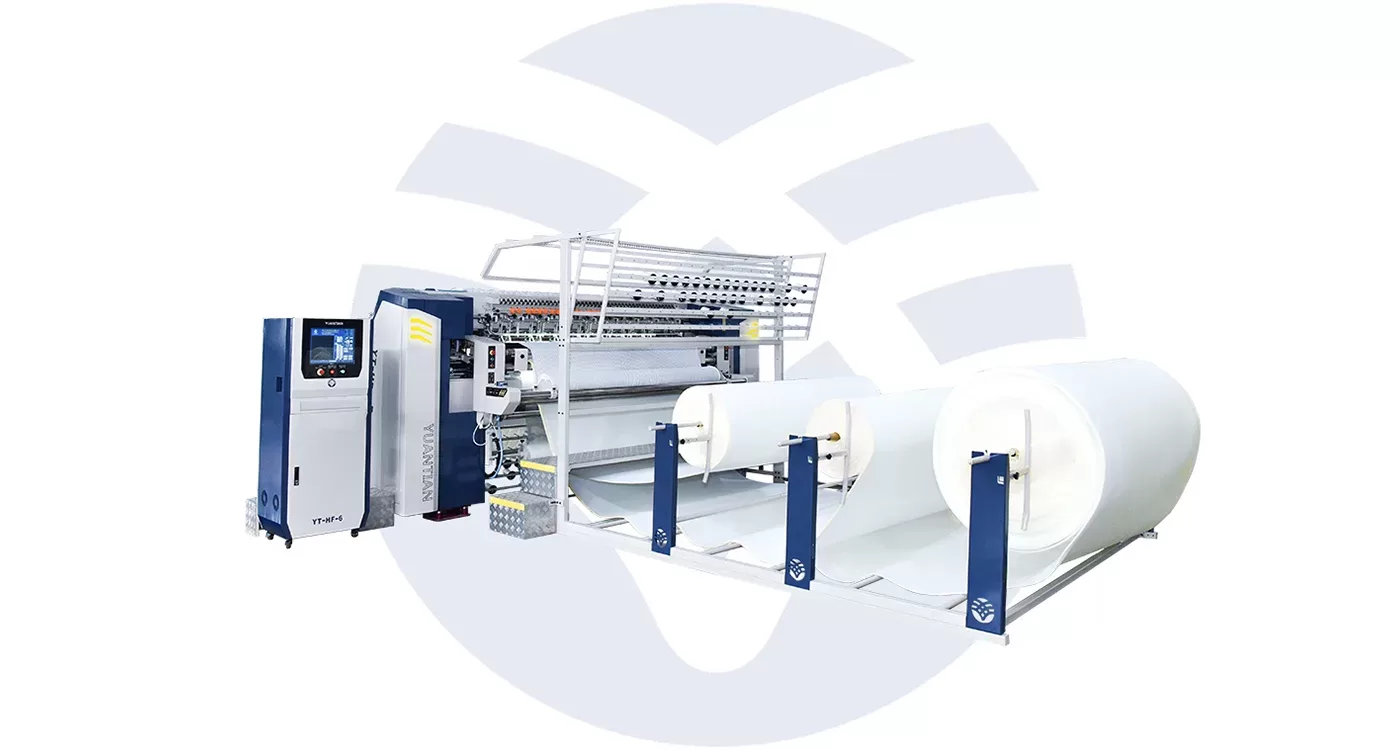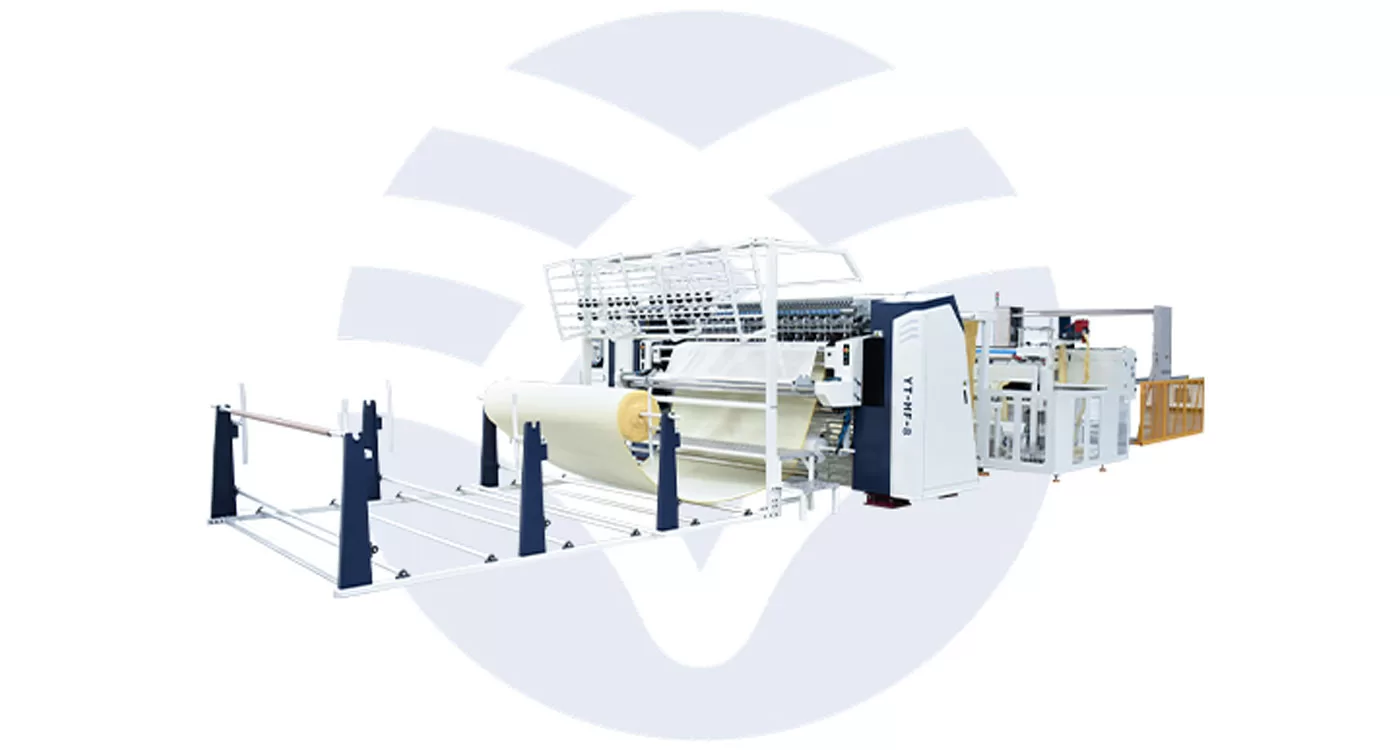- Home » The Cost of Mattress Quilting Machines: Investment vs. Long-Term Gains
In the competitive world of mattress manufacturing, the equipment used plays a pivotal role in ensuring the quality and durability of the final product. Among these critical tools is the mattress quilting machine, a device essential for creating the plush, cushioned top layers that mattresses are known for.
Investing in high-quality quilting machines is a significant financial decision, but understanding the balance between the initial investment and the long-term gains they bring can help manufacturers make informed choices. This passage will explore the cost factors associated with mattress quilting machines, the advantages of investing in premium equipment, and the long-term financial benefits that come with such decisions.
The Initial Investment: Costs of Mattress Quilting Machines
Types of Quilting Machines
Mattress quilting machines come with diverse prices, concerning their type, features, and the degree of automation. Mattress quilting machines could be grouped mainly into the following categories:
Manual Quilting Machines: These are low-investment machines since most operations require human labor. Manual quilting machines are suitable for small-scale manufacturers or freshers who want to have a minimal initial investment in mattress quilting.
Automatic and Computerized Quilting Machines: These machines are equipped with advanced technology that allows for higher precision, efficiency, and reduced labor costs. Due to the automated control, the manufacturers can achieve consistent quality at higher speed, hence automatic machines become highly sought after by any large-scale operation.
Besides the basic price of the machine itself, there are installation costs, maintenance contracts, and the training of operators. The initial investment might sound immense, but once the long-term savings come into view, these machines make a lot of sense.
Customization and Additional Features
Most of the modern mattress quilting machines have multi-needle options, different stitching patterns, and integrated feeding systems for fabrics. These features increase the upfront cost of the machine but can be very useful in increasing production efficiency and catering to a customer’s varied preferences.
A multi-needle machine, for instance, can quilt simultaneously several layers of fabric, thereby saving production time and labor. These upgrades add costs on top of the original price but deliver well-defined productivity gains that justify the added expense.

Long-Term Gains: Financial and Operational Benefits
Increased Production Efficiency
Perhaps one of the most striking benefits realized by investors is increased production efficiency obtained from high-quality, automated mattress quilting machines. In essence, the automated quilting machines can run without stopping with very minimal human intervention, hence, production at higher output is possible and takes less time for the manufacturer.
For example, an automatic quilting machine can stitch up to 500 mattress tops in a single day, whereas a manual one may be able to produce only 100-200 tops in the same period.
This again helps the manufacturing companies to meet higher market demand while having their products at a lower cost per unit. Eventually, productivity gains can yield cost savings that offset the initial investment and provide a long-term operation that is more profitable.
Improved Product Quality and Consistency
Consumers want consistency in mattress quality, which means quilting machines become of paramount importance in the entire production system. High-quality quilting machines can provide accuracy in stitching to avoid problems such as misalignment or uneven patterns in the pattern. A well-quilted mattress will ensure good comfort and durability, along with good looks, which may increase customer satisfaction and loyalty toward the brand.
It reduces a great number of defects in the products due to errors or quality differences, as computer-controlled machines have a pre-programmed pattern and stitching sequences for repetition. Longer-term, higher-quality mattresses translate to fewer returns and complaints, saving on costs from warranty claims and dissatisfied customers.
Reduction in Labor Costs
Another important benefit of automatic mattress quilting machines is the reduction of labor costs. For hand-driven quilting machines, skilled operators are required to feed the fabric and monitor the machine’s operation, normally increasing labor costs. In contrast, this automated machinery can function with little monitoring, allowing manufacturers to shift labor to other key components of the production process or reduce the total number of workers required.
For instance, one operator can operate several machines operating at the same time, thus significantly reducing labor hours per unit produced. In the long term, this labor efficiency eventually translates into substantial money savings for the manufacturer, who may eventually break even on the cost of the machine and expand the profitability margin overall.
Long-Term Gains vs. Initial Costs: A Balanced Perspective
Return on Investment (ROI) in the Mattress Industry
In addition, when valuing mattress quilting machines, one has to take into consideration the long-term return on investment. Stronger machines mean increased capacity, cost reduction, and longevity because solid machinery requires less maintenance. Whereas the cheapest machines will be repaired rather often, with frequent replacements of certain parts, a really good machine is built to last, ensuring smooth operations for years to come.
For example, a manufacturer producing 50,000 mattresses annually may achieve a production increase of 10-15% because of an automated quilting machine. In five years, the net margins from increased production, as well as those obtained by saving on labor and fewer returned goods due to defects, can easily be greater than the initial investment cost.
Maintenance and Durability
Although these high-end quilting machines have a higher initial cost, most of them are built to last and require infrequent maintenance and repair. Spending the money on a sturdy, good-quality machine will go a long way in minimizing any downtime, production should be able to continue without any major delays. Further, many manufacturers offer maintenance contracts or warranties that cover routine servicing, this will further minimize the likelihood of additional unforeseen costs later on.
Lower maintenance costs, combined with the long lifespan of high-quality machines, contribute to an overall lower total cost of ownership (TCO). Over ten years, for example, the manufacturer who invests in a quality machine will probably spend far less than his competitor who buys a cheaper machine but then continually experiences the need for maintenance and repair work.

Conclusion
Investing in a mattress quilting machine is a major financial decision for any manufacturer, but the long-term gains often outweigh the initial costs. From increased production efficiency and reduced labor costs to improved product quality and lower maintenance expenses, premium quilting machines offer substantial returns over time.
While the initial investment may seem steep, the operational advantages and long-term profitability make high-quality quilting machines a wise choice for manufacturers looking to enhance productivity and stay competitive in the market. By carefully considering both the upfront costs and the future benefits, mattress manufacturers can make informed decisions that contribute to the long-term success of their business.
Связанные с ними товары

















